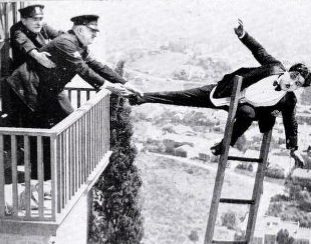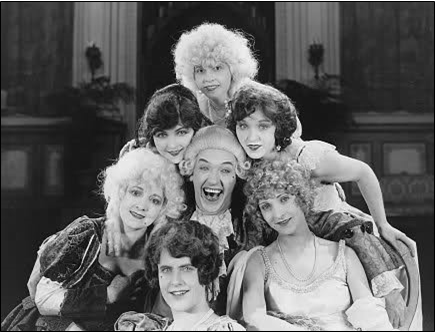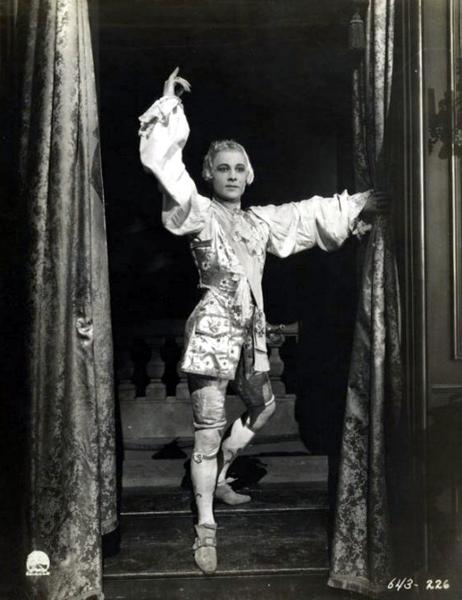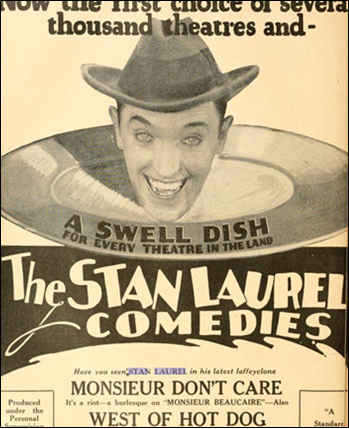
Lloyd Hamilton exists now like one of those dusty, anonymous portraits hanging in a long corridor. To most people, if his image is seen at all, it is a faded likeness of the flesh and blood he once was, the achievements of his life almost totally forgotten. While this analogy could go for a good majority of the performers I write about here, none have faded or fallen so far from their previous colourful heights as Hamilton.
With his offbeat humour and fantastic reaction-based comedy, ‘Ham’ was once considered among the funniest men in the world (he was reportedly a favourite of both Chaplin and Keaton). But his career was dogged by spectacularly persistent bad luck. This continued beyond his early death, as his best films went up in smoke, leaving only a fraction of his works scattered in archives. Most of these are from the bookends of his career, either embryonic versions of the style he later perfected, or tired re-workings that his heart clearly wasn’t in. Only in snatches of classics like ‘THE VAGRANT’, ‘CRUSHED’ or ‘MOVE ALONG’ can we see what really made him special.
So, when a scarce or previously unseen Hamilton film turns up, it’s a pretty big deal for Ham’s fans (all 17 of us). Could each new discovery be the one, the film that restores his tattered reputation beyond doubt? A couple of years ago, a very rare example of his films, ‘A HOME MADE MAN’, turned up on eBay in a 16mm print. I placed several bids but lost out. The film never resurfaced; I figured it had gone to someone who didn’t want to share it with the world. That is, until I mentioned it to a friend, and it turned out that they had known the person who bought it. (Not only this, but there were some potential plans to have it telecine-ed (sic) with some other rare Ham films in the hope of possibly putting together a DVD of a few of his films. Excitingly, I finally got the chance to see the film a little while ago.
The stakes were high, but the chances of it being a classic were pretty low. It was among Hamilton’s last silents, as problems with alcohol were taking their toll. Of another 1928 release, ‘ALMOST A GENTLEMAN’ critic Raymond Ganly’s review was short but brutal: “Remember how good Lloyd Hamilton used to be? Weep when you see him in this.” These late silent shorts tended to eschew his character based comedies for random gags and gratuitous slapstick. Would ‘A HOME MADE MAN’ be any different?
Well, as expected, it’s not the holy grail of Hamilton films. But, I doubt it would have made Mr Ganly weep, either. It was a pretty good comedy, below the Hal Roach comedies of the same time and Hamilton’s better previous work, but enjoyable. Like another late period Ham short, ‘BLAZING AWAY’, it has two distinct halves, and is based around Ham finding a job.
In the first reel, Ham has been sent by the employment agency to a soda fountain-cum-gym run by Kewpie Morgan. Morgan takes one look at him and winces, but he’s desperate, so Ham gets the job. Next we get the incompetent soda jerk routines you’d expect, with ice cream splattered, eggs broken and plates smashed. In fact, it’s all quite similar to the early scenes of Buster Keaton’s ‘COLLEGE’, from the year before. However, Hamilton is able to show what made him special. The way he delivers hackneyed gags in this line is uniquely his own, and it is not the slapstick itself that causes the laughs, but rather his hurt dignity. As a result, you feel less like you’re watching a Keaton rip-off, and more a reaction comedy that anticipates Oliver Hardy’s attempts to master simple tasks. As a result, the soda bar gags are the best moments of the film.

Another typical Hamilton twist on standard material: he is carrying a huge pile of plates, that wobble to and fro. He loses his footing, and theplates are sliding all over the place…. but the crash never happens as he safely reaches the counter. Morgan and Hamilton sigh with relief; “I never broke a plate in my life,” says Lloyd. However, he has placed them on top of his apron on the counter top, and as he walks off, the plates finally crash to the ground.
Fearing for his remaining crockery, Morgan sends Hamilton in to the gym as a personal trainer. After all, if you can’t trust someone with breakables, then why not trust them with peoples’ health? Here, he predictably makes an equal mess of things, first trying to instruct a line of athletes in a nicely choreographed sequence, then taking to the gym equipment himself. Things go downhill from here, as his efforts on the rings lead to him swinging out of the window and clinging on to the ledge in a pretty feeble Harold Lloyd ripoff.

Once he is safely back inside, the film ends with him pitted against Morgan in a boxing match, which he surprisingly wins. Ham victoriously leaves the gym behind.

OK, so it’s not the classic we could hope for. But, it does show what Hamilton could do, even with mediocre material, and as such I’m very glad to have seen it. Certainly it’s a decent comedy short for the time, and he makes the most of his opportunities, even when the material is subpar. Hamilton was without doubt a great, individual comic performer with his own distinct style. Yet again, after viewing one of his films, I’m left with the question: What could he have done with better material?






















